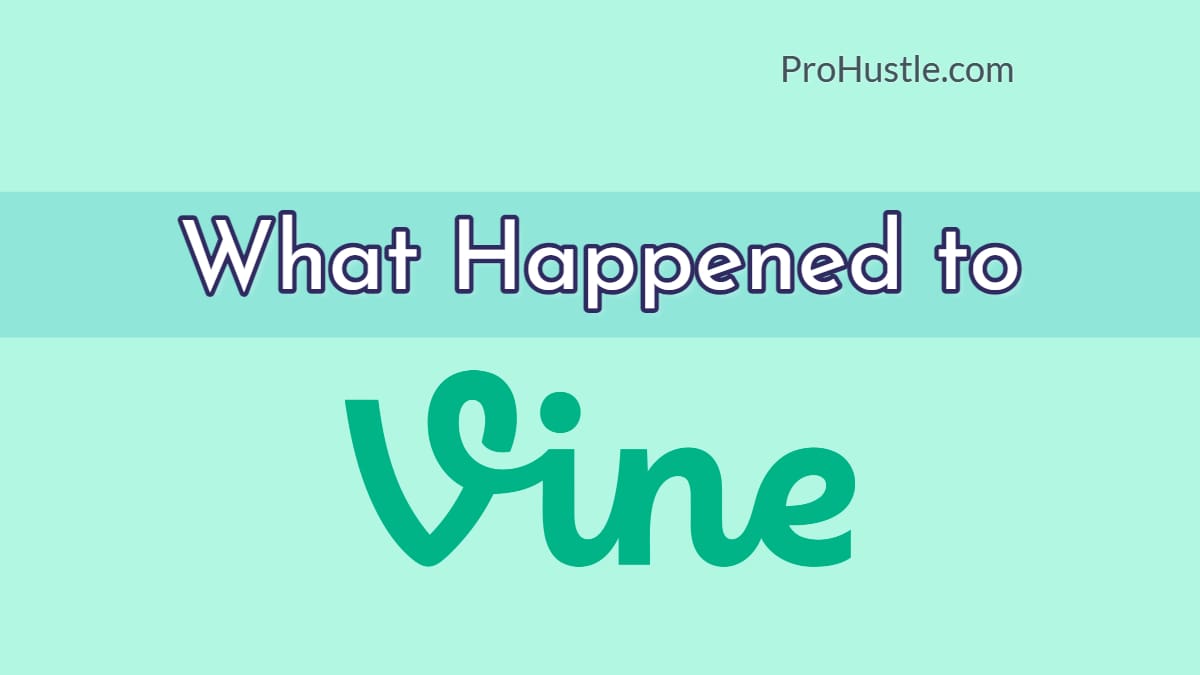In the vast world of social media, where bite-sized content has become the norm, platforms like Instagram, Facebook, TikTok and YouTube have captured our attention with their short video formats. We often find ourselves scrolling through quick, captivating clips that entertain, inform, and connect us with others. But have you ever wondered where this trend originated? Before Instagram Reels and TikTok took the stage, Vine emerged as a groundbreaking platform, revolutionizing the way we share and consume videos. It introduced the concept of micro-entertainment, challenging creators to captivate audiences within a mere six-second time limit.
From its humble beginnings to its explosive popularity, Vine captivated millions of users and showcased the power of brevity and creativity. However, despite its early success, Vine faced challenges and ultimately met its demise. In this article, we delve into the fascinating rise and eventual fall of Vine, examining the factors that contributed to its decline, including increased competition from other platforms and limitations in monetization opportunities for content creators. By understanding the journey of Vine, we gain insights into the ever-evolving nature of social media and the constant quest for innovative ways to capture our attention.
Check out our case study on TikTok, the successor to Vine.
Table of Contents
What is Vine?
Vine was a social media app that allowed users to share six-second videos with their followers. Although six seconds sounds very restricting, it was this time limit that forced users to be creative and was a big reason why Vine was so unique. Vine was extremely popular back then, and many people still don’t know why it was discontinued. In fact, many people believe that Vine played a big role in shaping the social media landscape as we know it today.
The Vine app was founded in June 2012 and was first released on January 24, 2013. The app was developed by Dom Hofmann, Rus Yusupov, and Colin Kroll, who had all previously worked at Twitter. Twitter saw its potential before its launch and bought it in 2012 for 30 million dollars.

Popularity of Vine
The idea behind the Vine app was to create a platform allowing users to share short videos with their friends easily. The app became more popular as time passed, and people began using it to post funny skits and jokes. At its peak, Vine had over 200 million active users, and over 41% of American teenagers were estimated to be using the app. Vine was especially popular with celebrities and brands, who used it to share short, funny videos with their followers. Vine’s social network allowed users to share their videos not only within the app but also on other popular social platforms like Facebook and Twitter. The Vine app provided a browsing experience where users could explore a collection of videos grouped by themes with the intention of creating trending content.
Vine attracted a diverse range of people who used the platform for various purposes. Celebrities like Logan Paul, King Bach, Lele Pons, and Jerome Jair had some of the most popular accounts on Vine. They amassed millions of followers and were instrumental in creating iconic Vines. It became a hub for short-form comedy, music performances, video editing, and stop-motion animation. Notably, on February 1, 2013, a Turkish journalist used Vine to document the aftermath of the 2013 United States embassy bombing in Ankara, showcasing the platform’s potential for real-time reporting and documentation.
Vine also found its place as a promotional tool. In 2013, Daft Punk revealed the track listing of their album Random Access Memories through a Vine video, leveraging the platform’s concise format for creative announcements. Furthermore, on September 9, 2013, Dunkin’ Donuts made history by becoming the first company to air an entire television advertisement in the form of a single Vine. This innovative approach demonstrated Vine’s appeal as a marketing channel. Another significant milestone occurred on April 1, 2014, when A&W Restaurants utilized Vine to launch its Mini Polar Swirls, making it the first product launch on Vine.
However, despite its widespread popularity, on October 10, 2016, Twitter announced the discontinuation of the Vine app, and the app was officially shut down on January 17, 2017. This decision came as a significant blow to the dedicated Vine users who had relied on it for entertainment and creative expression.

Reasons for the Fall of Vine
Financial Problems and Moral Dilemma:
The main reason behind the fall of Vine was, unsurprisingly, money. The platform faced twofold financial problems. Firstly, there were challenges in funding the app itself, as it required ongoing investment for maintenance, updates, and infrastructure. Secondly, Vine struggled to provide a sustainable source of income for its creators, who needed to earn a living within the service.
On the side of the app itself, Vine faced an issue of morals. The creators had a strong desire to keep the platform as ad-free as possible. They aimed to maintain the integrity of the user experience and preserve the unique content-driven nature of Vine.
Difficulties with Sponsored Content:
Another challenge Vine encountered was the difficulty of incorporating sponsored content within its six-second timeframe. Vine’s short video format demanded concise and creative storytelling, making it a challenge to seamlessly integrate promotional material. Despite the ambitious nature of Vine, only a few companies stepped up to the challenge. Dunkin’ Donuts was the first to deliberately create an ad in Vine format, airing it on TV before a Monday Night Football game in September 2013. While Dunkin’ Donuts continued to post ad-like videos on its Vine account, only a few others followed suit.
Limited Opportunities for Content Creators:
For users regularly posting content, Vine presented significant hurdles to turning their passion into a viable profession. The platform offered little room for brand collaboration or endorsement opportunities, leaving content creators with limited avenues to monetize their work. Unlike platforms like YouTube, which had revenue-sharing schemes, Vine did not provide a direct way for creators to earn income from their content. As a result, content creators often treated Vine as a side endeavor and began considering migrating to platforms that offered more sustainable revenue models, such as YouTube.
Failure to Meet Market Demand:
Vine started as a microvlogging platform but transformed into an entertainment media platform after its launch. Most users were passive viewers, consuming content from a minority of active creators. The success of Vine relied on keeping these creators engaged, but Vine failed to meet their needs on two important occasions.
Firstly, Vine stuck to its strict 6-second video length for too long, limiting the ability of creators to experiment with different types of content, such as vlogging. It was difficult to express opinions or ideas in such a short time frame.
Limited opportunities for content creators, discussed above, is another example of Vine’s failure to meet the demands of the market. While Vine was effective for audience growth, it lacked the means to help creators monetize their work, leading them to explore alternatives.
Increasing Competition:
Vine’s decline was further fueled by intensifying competition from other social media platforms. Instagram and Snapchat both added video-sharing features in 2013 and 2012, respectively. These platforms attracted users with their expanded video capabilities, drawing attention away from Vine. The emergence of these competitors contributed to Vine’s loss of user engagement and growing difficulty in maintaining its position as a dominant video-sharing platform.
Issues with the Parent Company:
Twitter’s strategic move to acquire Vine even before its official launch was driven by its ambition to leverage it for the expansion of its own brand and business. This meant that Vine was not a primary focus for its shareholders, and this became clear when Twitter introduced its own video feature, which made Vine less necessary. It’s not surprising that Twitter executives talked about integrating all of their video solutions, indicating a move away from supporting Vine as a separate platform.
Mismanagement:
Vine faced significant challenges within Twitter, which had a negative impact on the business in ways that may not have been obvious to outsiders. These challenges resulted in difficulties in retaining key executives at Vine. In 2014, two of the founders left, and the third was later laid off, indicating potential conflicts with higher-ups at Twitter. Vine faced a period of inactivity and did not release any significant updates for a year. When there are issues at the top, they tend to affect the entire team, and it becomes difficult to maintain strong leadership and a clear sense of direction and purpose.

TikTok vs Vine
Vine and TikTok often draw comparisons because both apps allow users to share short videos. However, there are notable differences between the two.
Length and Format:
One of the primary differences between TikTok and Vine is the video length. Vine limited videos to six seconds, while TikTok allows users to create videos of up to one minute in length. This extended duration on TikTok enables users to explore more complex ideas, showcase talents, and engage in storytelling.
Features and Editing Tools:
TikTok offers a wide array of features and editing tools that Vine lacked. Users can add filters, effects, text overlays, and background music to their videos, enhancing their creative expression. These features have contributed to the platform’s popularity and have empowered users to produce high-quality, visually appealing content.
Influencer Culture and Content Creation:
TikTok has placed a significant emphasis on influencer culture and content creation. It has actively supported and promoted influencers, providing them with opportunities to gain a large following and collaborate with brands. This has created a vibrant community of content creators on TikTok, with many users aspiring to become influencers themselves.
Discoverability and Algorithm:
Vine primarily relied on user-generated content for discoverability, with users following specific accounts to see their videos. TikTok, on the other hand, employs a sophisticated algorithm that personalizes the content feed for each user based on their interests, interactions, and trending videos. This algorithmic approach has contributed to TikTok’s rapid growth and the discovery of diverse content.
Music Integration:
TikTok has a strong emphasis on music integration, allowing users to easily incorporate popular songs into their videos. This has led to the creation of viral dance challenges, lip-syncing trends, and a robust music community within the app. In contrast, Vine did not have a built-in music library or dedicated music features.
Although Vine is no longer active, we can still find classic Vines online. Many people credit Vine for inspiring future social media platforms such as TikTok. Without Vine, it’s uncertain whether these popular apps would have come into existence. Despite its demise, Vine still has a dedicated fan base that holds fond memories of the app.
Will Vine Make a Comeback?
Recently, Elon Musk surprised many people by tweeting about bringing back Vine, sparking speculation about a possible revival of the app in some form. This tweet garnered attention, especially since Vine had been discontinued a few years ago. Musk’s tweet included a poll, with 69.6 percent voting in favor of bringing back Vine and 30.4 percent voting against it. In response, MrBeast humorously commented that it would be hilarious if Vine made a comeback and competed with TikTok. Musk engaged in the conversation, asking what could be done to make Vine better than TikTok. The speculations regarding whether Elon Musk will actually revive Vine are varied, with some people believing it’s a possibility while others see it as a mere pipe dream. Nevertheless, this buzz and attention surrounding Vine’s potential return are exciting news for all the Vine fans out there.
In conclusion, Vine was more than just a social media app; it was a groundbreaking social media app that left a lasting impact on the social media landscape. Despite facing challenges such as strict time limits for videos, limited features and monetization options, and increasing competition, Vine’s unique format and creative content continue to resonate with its dedicated fan base. The app’s unique and concise format forced users to distill their ideas into bite-sized, engaging videos, sparking a wave of creativity and viral trends. Vine’s ability to capture moments of humor, wit, and talent in just a few seconds made it a favorite among users and propelled many individuals to internet stardom. The recent speculation about a possible revival of Vine adds to its enduring popularity. Regardless of its future, Vine’s legacy as a pioneering platform will be remembered and celebrated.

